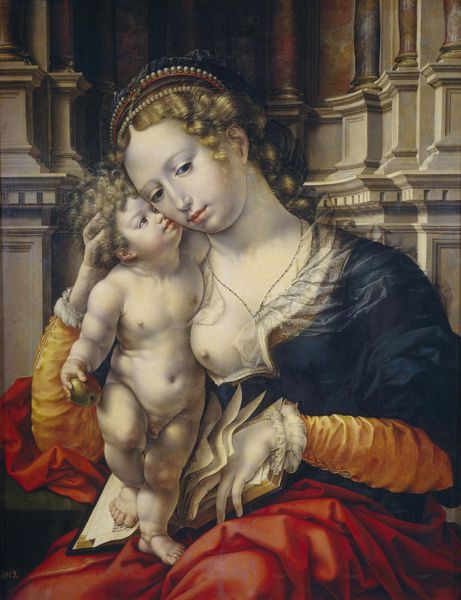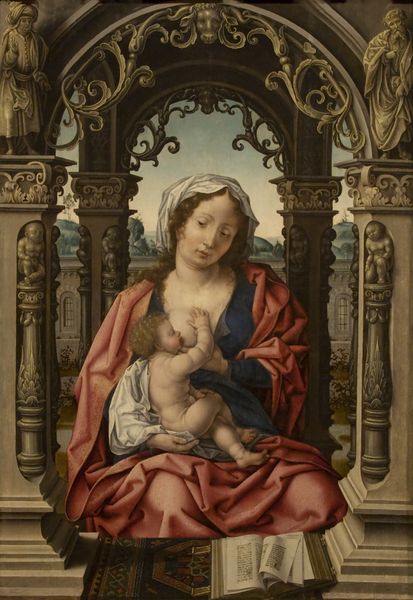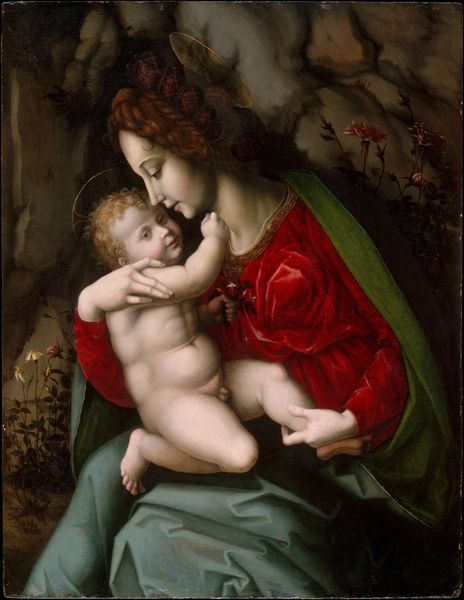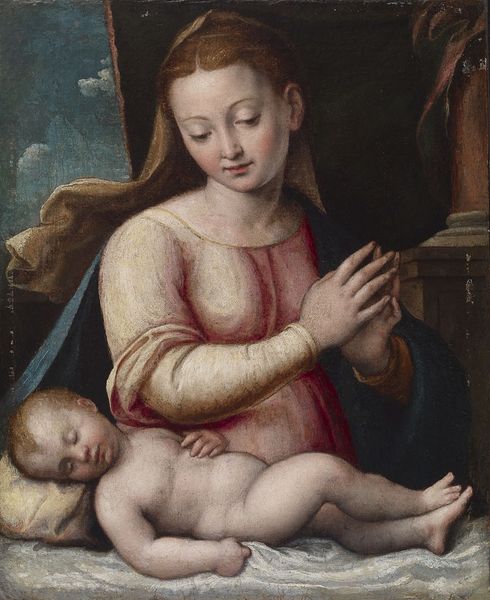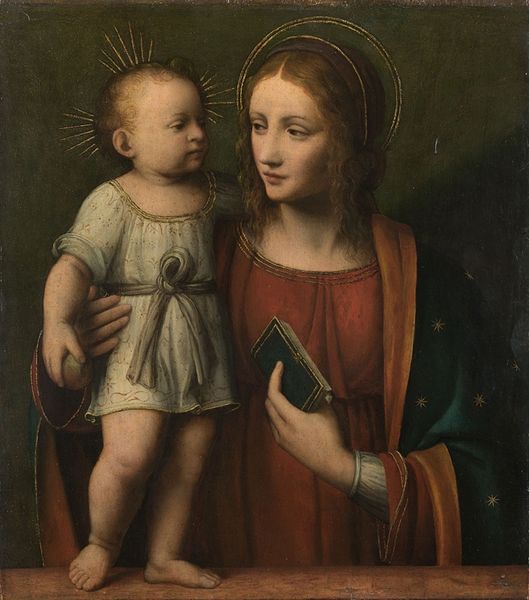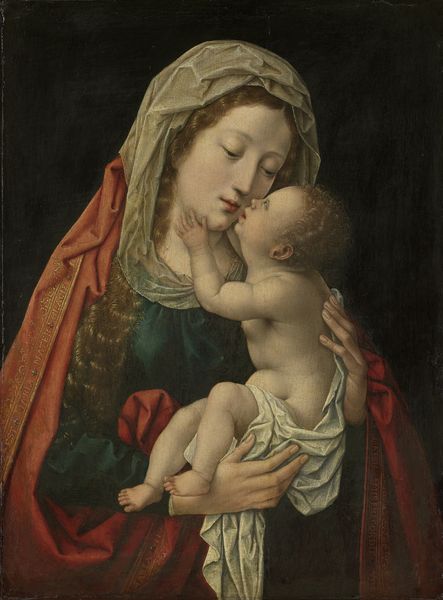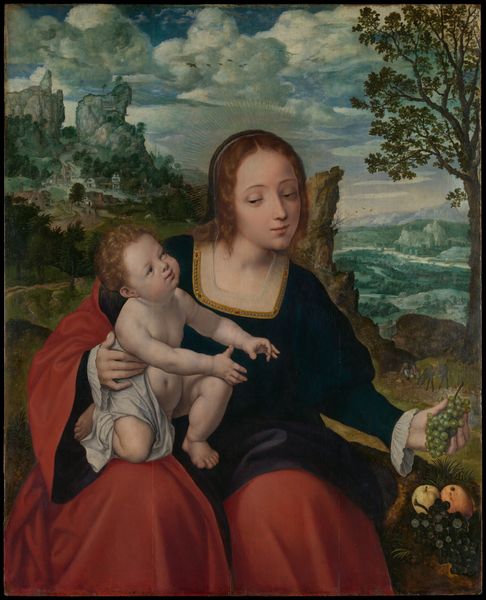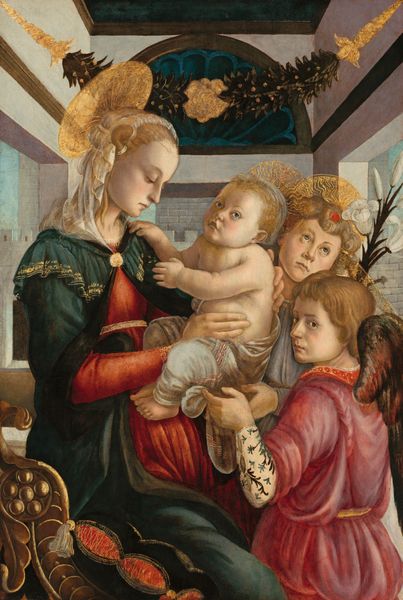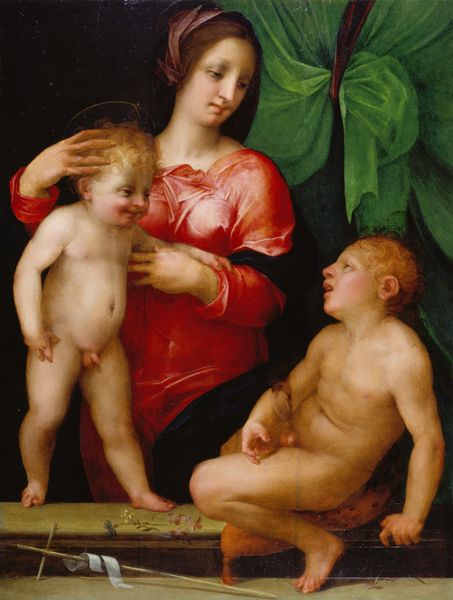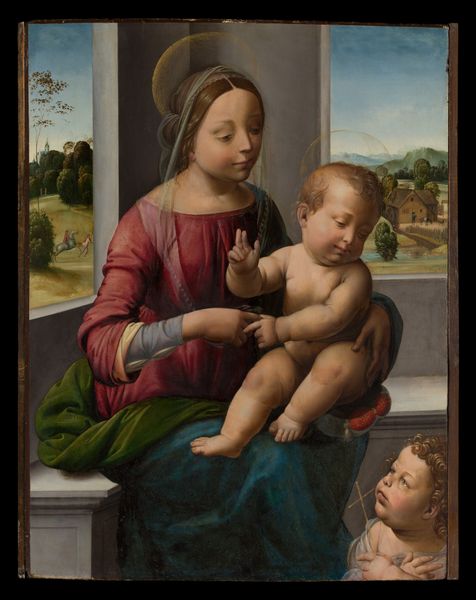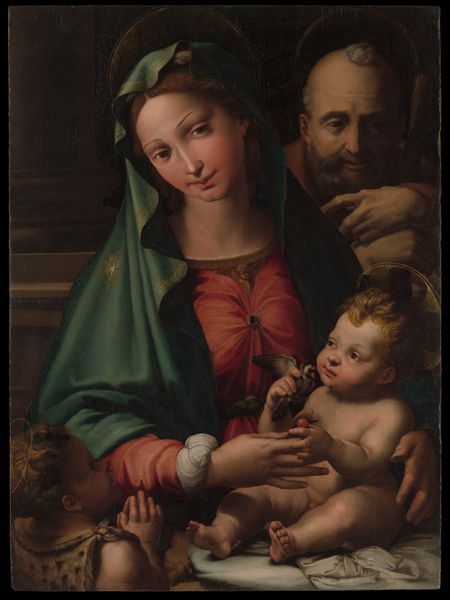
painting, oil-paint
#
portrait
#
allegory
#
painting
#
oil-paint
#
figuration
#
italian-renaissance
Dimensions: support height 61 cm, support width 42.5 cm
Copyright: Rijks Museum: Open Domain
Editor: This is Adriaen Isenbrant's "Virgin and Child", painted sometime between 1530 and 1540 with oil paint. The Madonna and child are beautifully rendered, but there's a somber feel to the scene, isn't there? What catches your eye most about this painting? Curator: The Virgin's downcast gaze is definitely striking. These types of intimate, domestic portrayals gained popularity during the Renaissance, and they often served a dual purpose. While they offered viewers a relatable image of maternal love, they also subtly reinforced the Church’s social doctrines on family and piety. Notice the architectural background – it places the figures within a defined, almost theatrical space. What effect do you think that has? Editor: It kind of elevates the everyday moment, almost like staging a scene, which I guess connects to the social doctrine that you're describing. I also noticed those rams’ heads decorating the background; do they mean anything? Curator: Interesting catch! During that time, specific iconographies served didactic functions. In paintings of the Virgin, lambs or rams signified sacrifice and pointed to the future Passion of Christ, though such symbols were not always readily interpretable, becoming largely obscured and lost over time, with meanings often diverging based on social class, literacy, or theological leanings. What did the patrons of these paintings think? Editor: It’s interesting to think how a piece of art served many purposes; to reflect current ideals, show devotion, but also as propaganda to a degree. It changes how I look at paintings like this now. Curator: Exactly! Examining art through that lens gives it such depth, doesn't it? Now you are analyzing a piece of artwork like a true historian.
Comments
rijksmuseum about 2 years ago
⋮
The marble niche in which the Virgin and the Child are seated is a veritable sample-book of the modern Renaissance style. Pilasters and balusters, semi-circular alcoves, rams’ heads, cornucopias and scrolled acanthus leaves are typical of the new style, which was based on the architecture of Classical antiquity.
Join the conversation
Join millions of artists and users on Artera today and experience the ultimate creative platform.
